This is the sixth article in the much loved series of Same Name confusions written by our mentor, author and film historian Arunkumar Deshmukh ji. We are thankful to him for all the efforts he took in writing this article. The pictures in the article are courtesy Sadanand Kamath ji. We are extremely thankful to him for sharing these lovely pictures from his collection too.
The Indian Film History students face many problems. First and foremost problem is the lack of documentation. Unlike other countries, there is no organised documentation about the people working in this industry, especially film making. Due to the untiring efforts of Shri Har Mandir Singh ‘ Hamraaz ji’ and few others, we have at least information about the films made in the Silent as well as Talkie Era. Even the song details are available.
Information about the big stars, Heroes and Heroines is available but information about the smaller actors is hardly available anywhere. Due to the efforts of Dr. Surjit Sigh ji, Greta Memsaab ji and through a few books, photos of some smaller actors are available, but except their names, no other details are known.
Besides this problem,another big issue was about several artistes having similar names. In the period 1931 to almost 1970, this problem was a great headache. In the early cinema period, certain names were very common. Particularly, names of actresses used to have this issue. Not that actors or male artistes did not have the same names, but initially the ratio was inclined towards female names.
This caused a big hurdle when Filmography was to be prepared. Invariably, injustice was done to the less known artiste of the same name and his/her films were credited to the more famous artiste.
When I started writing about old films and the people connected with them, I faced this problem and I decided that I must do some work on this issue to solve it wherever possible. I started concentrating on collecting information on Same name artistes. The job was not at all easy and I had to sometimes spend 10-15 days on one name to get the desired details. I had to tackle many sources, read a lot of books, magazines, newspaper cuttings, and old articles in cine magazines. In the process I expanded my library of books on cinema. However, I made it my mission and after a period of 6 years, I collected information on 54 such artistes, with their Filmographies separated carefully to the right ones.
When I published my first book ” Forgotten artistes of early cinema and Same Name Confusions” in 2018, I included all this information in the book. Even after the book came out, I continued my mission and presently I have information on another 18 such artistes. That makes a total of 72 artistes. Surprisingly, 36 are males and 36 are females !
Today I am happy to post Part VI of Same Name Confusions for our readers. I thank Shri Gajendra Khanna ji for making this platform available to me. I hope readers will gain from this post.
In this part we will discuss about 5 pairs of the same name…
1. RAMOLA AND ROMILLA
2. C. ARJUN AND ARJUN BAKSHI
3. NASEEM BANU ANS NASEEM JR.
4. KHURSHEED AND KHURSHID JR.
5. KALYANI BAI AND KALYANI DAS
1. RAMOLLA AND ROMILLA….
Actress Ramola (real name- Rachel Cohen) was born in a Jew family on 5-7-1917, at Bombay. Her father Hayam Cohem was a school Teacher. Her initial education was done in Bombay. Later they shifted to Calcutta where she completed her matriculation and joined films. Her first film was ‘ Graher fer’-38,a Bangla film. She did a few small roles and then came ‘Khazanchi’-41 from Pancholi of Lahore. This changed her career and she became a popular actress. She did films like Masoom, Khamoshi, Manchali etc.
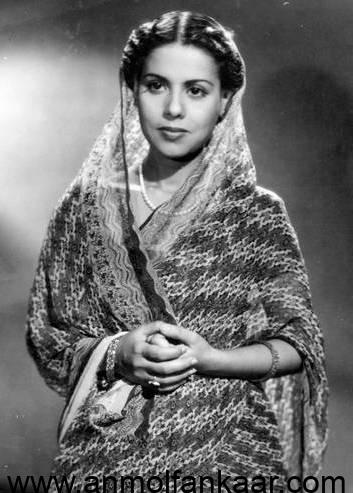
Initially,Ramola was a small actress. First she acted on stage along with her two sisters. Then she got a Bangla film. It was Jagdish Sethi who introduced her to director/lyricist/dialogue writer Kidar Sharma. According to Kidar Sharma,
“She was smart and a charming young lady. Her only drawback was her height. She was not tall, just about 5 feet, but she had lofty ambitions. One day she came to see me and I promised I would personally take her to the director of her choice. She said, “I would like to be introduced to Mr. Nitin Bose, and no one else.” I took her to Mr. Bose, and was sure that her charm and talent would impress him.
Mr. Bose scanned her, from top to toe, while I praised her talent and her choice of a director, like Nitin Bose. After a long silence, Mr. Bose addressed me and said, “When you brought her to me, why did you forget to bring some bricks for her to stand on?” Poor Romola was hurt and heart-broken by this great director’s caustic remark. She quietly said, “Goodbye” and walked away from his office.
I followed her and found that she was in tears. ‘I was moved by the plight of a struggling youngster having high hopes, being ridiculed for something which nature was responsible for. I knew what it felt like to be ridiculed. I had experienced it often enough. I escorted her to the tram junction and there she bid me goodbye. To encourage her, I said, “Please, Romola, don’t be heart-broken. One day, when I become a director, you will be my first heroine, and we will prove to Mr. Bose and the world, what a great star you are.” Romola laughed and said,- “Poor Mr. Kidarnath, the dialogue-writer will never be a director and I will never be a heroine.” So saying, she jumped into the tram.”
However, Kidar Sharma kept his promise and cast her in his first film as director Aulad / Dil Hi To Hai (1939). Aulad/Dil Hi To hai was a down-to-earth story of a middle-class father, who had sacrificed all his life to educate his son and his darling daughter, hoping that they would be worthy children to the society and to the family. Little did the old man know that the generation gap would present a different, horrifying reality, which would destroy him completely. The modern college Miss, who destroys the dreams of her old father, the aged struggling middle class man, was played by Ramola.
After the success of the film, Ramola got romantically involved with R.C. Talwar, Kidar Sharma’s assistant who later became a director in his own right. According to Kidar Sharma, “R.C. Talwar was a classmate and friend so I ignored his relationship with Ramola.”
Later Ramola appeared in many films including Qaidi, Khazanchi, Khamoshi, Swan Aya Re, Rim Jhim etc. When she acted in Pancholi’s famous film Khazanchi-41, she became famous all over India and film offers started pouring on her. She looked so cute in her Punjabi dress- Salwar and Kurta- in that film, that this dress became famous and popular as Khazanchi dress amongst the women in India.
She acted in 23 films in Hindi and 5 films in Bangla. She even sang 14 songs in 4 Hindi films. After the arrival of new heroines including Madhubala, Nargis, Meena Kumari etc, Ramola’s career got eclipsed and she bid farewell to her film career. Her last 3 films Actor, Jawani Ki Aag and Stage were released in 1951. However her actual last film was the Bangla film, Anurag-51
Ramola was married twice. Her second husband, Leslie Rondeau, was a Captain in the British Air Force, who helped to train Indian pilots in the IAF post Indian Independence. Her son, Sam, from her first husband, migrated to Israel in the 1950s. She had two daughters, Dena and Linda, from her second marriage. Dena, based in London today, even acted in a film, GP Sippy’s Ahsaas (1979), and works in the fashion industry while Linda, a resident of Bombay, was an air-hostess with Air India. With her generous and large hearted spirit, Ramola also ‘adopted’ and looked after another 14 families, helping them move ahead in life.
Ramola passed away in Bombay on 10-12-1988.
While Ramola was doing films, another actress having a similar name – Romilla appeared on the scene. Romilla was actually Sofia Abraham, the younger sister of actress Pramila (Esther Abraham). Daughter of a retired Govt. Contractor Romilla was born in Calcutta. After passing the Junior Cambridge examination, she came to Bombay. She joined Imperial Film co. After doing some nondescript and uncredited roles, she became the heroine in Prince Movietone’s film Calcutta after Midnight-37. She started working in C grade stunt films of Mohan pictures and others. Some of her films were Bismil ki Arzoo-37,Cyclewali-38, Chabukwali-38, Thunder-39, Ratna lutari-39, Suhana Geet-41 ( later re issued as Toote Dil-47), Sarovar ki Sundari-42, Pistolwali-43 etc etc.
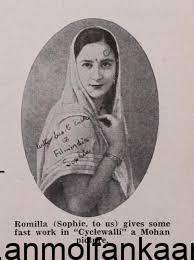
Romilla died young on 26th January 1948. I give the relevant portion of the quote from ‘Filmindia’ February 1948 issue:
“We regret to announce the sad and sudden death of Miss Romilla (Sophia Abraham), the stunt queen of many thrillers and a favourite of millions.
The news of her death at the young age of 25 on January 26, 1948 at her residence in Shivaji Park, came as a shock to all in the film industry because ‘Sophie’ as she was known to friends was not only a ‘queen of stunts’ but also a ‘queen of smiles’…………..
When the war broke out, she was the only film artist to chuck out a lucrative screen career and join up the Auxiliary Nursing Service.
Only a year back when she was demobilised, it was discovered that she was suffering from a malignant tumour (Cancer) in the chest”.
2. C. ARJUN AND ARJUN BAKSHI…
His full name was ARJUN PARMANAND CHANDNANI and he was born in Karachi on 1-9-1933. After partition his family settled in Baroda. He inherited his musical talent from his father who was a singer. He became assistant to another Sindhi music director Bulo C Rani. He started his career with composing for a Sindhi film Abana -1958.
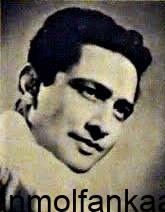
His first Hindi film was Road no.303 in 1960. Off and on he got films under nondescript banners with B/C grade cast. That he created memorable music nevertheless did not do much to change his fortunes. His teaming with the lyricist Jaan Nisar Akhtar would rank at par with the best of Sahir Ludhiyanvi’s composed by SD Burman or Roshan. He also composed a number of non film songs.
He gave music to 22 Hindi films, besides films in Gujarati, Sindhi and Haryanvi languages. Some of his films were, Main aur Mera Bhai, Punarmilan, Ek saal pehle, Jai santoshi Maa, Raksha Bandhan, Karwa Chauth, Aankh ka Taara, Lambu in Hong kong, Ustad Pedro, Mangu Dada, Gunahon ka Mandir, Nawab Sahib, Kanoon aur Mujrim, Hamari Kahani, O Mere Jaane Jigar etc..His film Susheela-1966,which was incomplete, was completed and releasd as Subah zaroor Aayegi in 1977 in which ‘bemurawwat bewafa’ song sung by Mubarak Begum and ‘gham ki andheri raat mein’ sung by Talat and Rafi became very popular.
I still remember the interview of C.Arjun by Ameen Sayani on radio in Binaca Geetmala prog. , a long time ago about the story behind as to how how this popular song was written by Indivar and how it was tuned.
C. Arjun said ….””one day we (both me and Indivar) were travelling in a BEST bus while returning home in the evening, from the recording studio. Both of us were sitting on the same seat and the bus was packed full with passengers. After 2 or 3 stations Indivar saw that a young and very beautiful girl boarded the bus and she came near our seat standing in the middle amongst other standing passengers. Indivar was repeatedly looking at her time and again. After 4 or 5 minutes, Indivar asked me to leave my seat and offer it to the pretty girl standing besides us.
After a bit of hesitation I agreed and gave my seat to her. To my surprise, Indivar didn’t talk to her even once while she was sitting beside him for about 20 -25 minutes before she deboarded the bus at one of the stops in our way. When I asked Indivar why he didn’t talk to her ?. He replied today he shall deboard the bus with me at my residence bus stop & answer me when we shall reach my home. We deboarded the bus at my residence. On reaching home Indivar said “my dear Arjun thank you so much for offering your seat to her and letting her sit beside me and I have imagined and thought of some lines while she was standing and then sitting beside me”. Indivar there and then spoke those lines to me and they were “PAAS BAITHO TABIYAT BAHAL JAYEGI….MAUT BHI AA GAYI HO TO TAL JAYEGI”.
And then Indivar wrote this whole song there and then in about one hour and asked me to compose its tune the same night. We sat together after our dinner and composed its tune before we went to our beds late at night. Indivar stayed with me that night and left for his home next day morning….””
C.Arjun died on 30-4-1992,due to a massive Heart attack when he was recording a non-filmi sindhi song in the Sterling Studios,Mumbai.
Sometime back there was a story that C.Arjun started his career with acting and that he was the Hero in film Malhar-1951.
There is irrefutable proof in Cinegems and Cineplot, that the Hero of Malhar was none other than ARJUN BAKSHI-father of the actress (of ‘Bullet’, with Dev Anand) JYOTI BAKSHI, and NOT C.Arjun, MD.
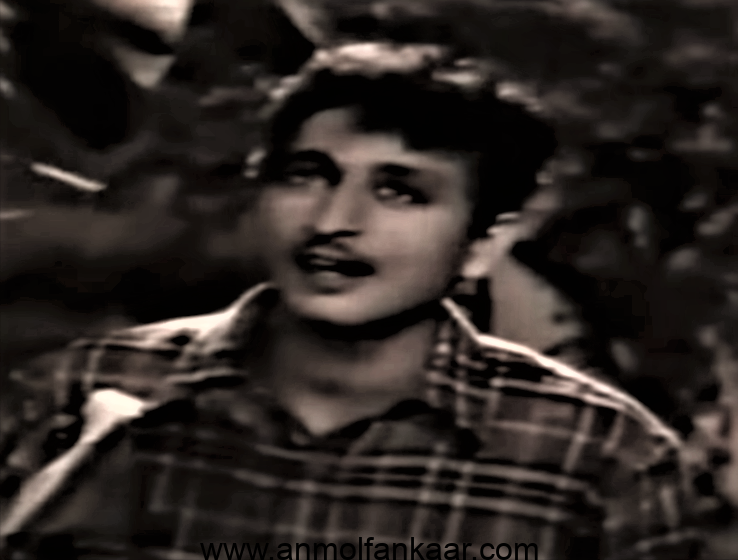
Arjun Bakshi who had acted in some other films, including ‘Daku ki Ladki’, and Naujawan etc, was later a screenplay writer in Hindi films.
Jyoti and her father separated later and Jyoti had a very pathetic and sad demise, a few years back.
Few years back one senior member from RMIM group had reported that he had met Arjun Bakshi in a Music shop in Canada in 2003 (C.Arjun had died in 1992)
So, once for all it is clear, once again, that C.Arjun the composer and Arjun the actor were two different persons. In addition, C.Arjun’s nephew- Shyam Chandnani, who is in Dubai appeared in a Music related Blog- Songs of Yore and commented that C.Arjun had never ever acted in any film or visited Canada, in his lifetime. That was another final confirmation.
3. NASEEM BANO AND NASEEM JR. ….
Few film celebrities of the Indian cinema could win popularity and fame of such unprecedented scale in the relatively short period of time that the captivatingly beautiful actress Naseem Bano managed. It was thanks to Sohrab Modi’s historic movie Pukar(released in 1940) in which she played Empress Nur Jehan, the wife of the philandering Mughal Emperor Jehangir. Naseem Bano’s name reached millions in the subcontinent through her photographs which adorned the living rooms of film buffs. She ruled over the hearts of millions. She was well-liked more for her ravishing looks than her histrionic talent. In comparison with her contemporaries, Naseem Bano’s tenure in filmdom was more eventful than any other heroine of Bombay’s film industry. She was among the first to move away from the overtly theatrical style of acting a la Sohrab Modi’s earlier films and adopted a more natural style.
Pari chehra Naseem Bano was born in Delhi, where her mother of Punjabi descent (from Amritsar) brought her up. The daughter of classical singer/actress Shamshad Bai, better known as Chhamiya, in her childhood Naseem learned to speak Punjabi from her maternal grandmother from Amritsar.
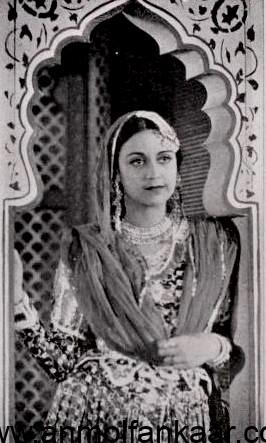
Naseem was born on July 4, 1916 in Delhi as Roshan Ara Begum, to courtesan-singer Shamshad Begum, better known as ‘Chhamiya’ and rich Nawab, Abdul Waheed Khan. She did her schooling at Queen Mary’s High School there with her mother harboring ambitions to make her a doctor. However, being a big fan of the movies and actress Sulochana in particular, after a family visit to Bombay, now Mumbai, in the 1930s, Naseem decided to make the movies her career. It was not easy. She had to fight hard with her mother to get her way, including staging a successful hunger strike along with many tears!
Much of Naseem’s early work came at Minerva Movietone, owned by the great Sohrab Modi. He introduced Naseem in his adaptation of Hamlet, Khoon Ka Khoon (1935). Sadly for Naseem, the film flopped at the box-office. She then appeared in a series of films, mostly socials for Minerva including Divorce (1938), Meetha Zahar (1938) and Vasanti (1938) before hitting the big time with Modi’s epic historical drama, Pukar (1939). Pukar was a landmark film for Modi and its lead cast that included Chandramohan, Sardar Akhtar, besides Naseem. The film, in particular, makes splendid use of Naseem’s regal bearing casting her as Jehangir’s wife, the Empress Noor Jehan. It remains her most well-known performance and one where she sang her own songs as well.
Saadat Hassan Manto in his book Ganjay Farishtay has nostalgically written lovingly about Naseem Bano and how Prince Moazam Jah, the heir apparent of the largest princely state of Hyderabad in British India had wooed her. Before her marriage to Mian Ehsan of Taj Mahal Pictures, Naseem Bano was, according to Manto, taken to Hyderabad with the consent of her mother Shamshad Bai. However, she realised after a couple of years that her daughter would be choked to death if left in Hyderabad. Through a shrewd move, she deceived the Prince and took Naseem Bano back to the freedom of Bombay City, where she rejoined the film industry. Manto also refers to a “poster war” that later ensued between Naseem Bano and Prince Moazam Jah. During the shooting of producer Mian Ehsan’s first movie Ujala, Cupid’s arrow struck both Naseem Bano and Mian Ehsan culminating in their marriage, which was solemnized in New Delhi away from the hustle and bustle of Bombay.
Following the success of Pukar, Naseem and Modi parted ways, and based on her strong impact as the Mughal Empress, Naseem signed two films with a rival studio to again play famous queens Cleopatra and Mumtaz Mahal respectively. Both films, however, failed to take off. But by now she had several well-known admirers including the son of the Nizam of Hyderabad.
Saadat Hassan Manto in his book Ganjay Farishtay has nostalgically written lovingly about Naseem Bano and how Prince Moazam Jah, the heir apparent of the largest princely state of Hyderabad in British India had wooed her. Before her marriage to Mian Ehsan of Taj Mahal Pictures, Naseem Bano was, according to Manto, taken to Hyderabad with the consent of her mother Shamshad Bai. However, she realised after a couple of years that her daughter would be choked to death if left in Hyderabad. Through a shrewd move, she deceived the Prince and took Naseem Bano back to the freedom of Bombay City, where she rejoined the film industry. Manto also refers to a “poster war” that later ensued between Naseem Bano and Prince Moazam Jah.
In this period Naseem also met childhood acquaintance Mohammed Ehsan who had returned from abroad armed with a degree in Industrial Chemistry. He launched a production house, Taj Mahal Pictures with the film Ujala (1942)starring Naseem and Prithviraj Kapoor. Through the course of the film and thereafter, Ehsan and Naseem fell in love and got married. Naseem then moved to Delhi along with Ehsan. The couple had two children, daughter Saira Banu, who also went on to become an actress and a son, Sultan Ahmed. For a while it looked like Naseem had bid adieu to films.
However, S Mukherji, who worked at Filmistan, convinced Naseem to come back and star opposite Ashok Kumar for Filmistan’s maiden production, Chal Chal Re Naujavan (1944). Though the build up for the film was huge, it only did moderate business at the box-office. More importantly though, Naseem was now back in the film industry for good. Ehsan and Naseem restarted Taj Mahal Pictures which would produce films starring Naseem. Some films produced by the banner include Begum (1945), Mulaqat (1947), and Chandni Raat (1949), the last also directed by Ehsan. Two of Naseem’s best performances came in Mehboob’s Anokhi Ada (1948) and Sohrab Modi’s Sheesh Mahal (1950), re-uniting her with Modi after more than a decade.
Naseem’s last lot of films include the swashbuckler Shabistan (1951), during whose filming leading man Shyam lost his life, Ajeeb Ladki (1952), Betaab (1952), which was her last film of note as a leading lady, and the stunt films, Sinbad The Sailor (1952) and Baghi (1953). Thereafter, she was seen in Sohrab Modi’s Nausherwan-e-Adil (1957), where she impressively played the Empress of Iran.
By the time she completed Ajeeb Ladki, Naseem’s marriage to him was on its last legs. Ehsan migrated to Pakistan on his own, taking with him all the negatives and prints of the films produced by Taj Mahal Pictures. He had these films screened there, making her an extremely popular actress across the border as well. Naseem then moved to England for a while as she sent her children to a day school there to give them the best of education. But finding England cold and aloof, the family finally returned to India.
Naseem Banu acted in 26 films. She also sang 39 songs in 13 films.
Once her daughter, Saira Banu, entered films, Naseem, who ironically was dead against her joining the movie industry, designed clothes for her including some trendsetting beautiful embroidered saris in Aayi Milan Ki Bela (1964). And though well in her 40s by now, Naseem continued to get acting offers but refused them all. Naseem Banu passed away in Mumbai on June 18, 2002. (Thanks to Upperstall.com for their article on Naseem Banu, along with excerpts from the obituary in London’s The Guardian dt.4-9-2002, wiki, HFGK, muVyz and my notes.)
Naseem Jr. or Miss Naseem Jr. or Naseem Lodhi was the younger sister of actress Shameem. She was born in Lahore on 8-2-1930. Her father had a shop and he was a General merchant. She was educated in Islamia Girls school, Bombay where she was staying with her actress sister Shameem. After Matriculation, she too wanted to become an actress. While in school she did many dramas. At the age of 13, she did an uncredited small role in film Salma-43.
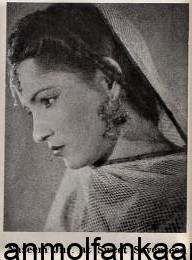
Her first major film was Jwar Bhata-44- also the first film of Dilip kumar and Mrudula. Her second film was Manorama-44. She acted in few more films Sanyasi-45, Zeenat-45, Door Chalen-46, Amar Raj-46, Jeewan Sapna-46 and Mera Geet-46.
She had a hot temperament and could not get along with co-stars and the Directors. Soon the offers diminished. Not having any income, she stayed with her sister Shamim. However, she fell ill and soon died on 17-11-1946.
She did only a few films, but it was enough to cause confusion. Her films Jeewan Swapna-46 and Door chalen-46 are generally credited to Naseem Sr.’s filmography.
4. KHURSHEED AND KHURSHID JR.
Khursheed Bano was born as Irshad Begum in Lahore,on 14th April 1914. As a child she resided in the Bhatti Gate area next to Allama Iqbal’s house. The two families were pretty close. Khursheed was a child then. There was no ambition of joining the showbiz bandwagon then and it was by chance that led her to this arena.
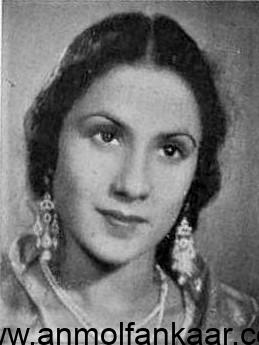
Khursheed was very still young when she became an actress in the early 30’s. The era of silent movies had already ended with the release of Alam Ara in 1931 and the Indian film industry was going through a revolution. What set her apart from other heroines were her attractive face and certain flamboyance owing to which she made her presence felt. And then she was a very good actress who could be melodramatic and happy-go-lucky with equal ease.
Each star then was required to playback for themselves and Khursheed was lucky to have a good voice. Hence started the brilliant era of some timeless classical and exemplary numbers like “panchi baawara chaand sey preet lagaaye”.
The graceful and decent actress was luckier to secure some of the best films including Sitara, Shaadi, Musafir, Pardesi, Bhagat Surdas, Dekha Jaye Ga, Shehanshah-E-Babar and Tansen.Pardesi had a very famous soundtrack comprising of memorable numbers by the late actress. In Tansen she played the protagonist Tani with Kundan Lal Saigal as Tansen. Together they made indelible performances and the role took her to great heights. She even transcended Saigal with her strong performances and pretty looks and her fans started calling her Tani after that.
Her leading men in those days apart from Saigal were Motilal, Ishwar Lal, Nazeer and Sadiq Ali. She made a successful pair with Motilal the most. Her female contemporaries included actresses of caliber like Kanan Bala, Devika Rani, Leela Chitnis, Suraiya, Swaranlata and Noor Jehan. The last three were her juniors.
Khursheed said that there was no such thing as rivalry in those days and actresses worked in close coordination. Abusing, backbiting or gossiping was not amongst their traits. Even the male stars with whom she worked treated her with great respect and there were no scandals.
Though she was an accomplished singer, acting remained her forte and first love. “Singing was a requirement to be a heroine in those days”, she said, “and even heroines with not too good voices were forced to sing if they were to act. But the composers were so good that they managed to get the best out of them then. Each song was recorded after several rehearsals. But I was an actress first and singing was just to complement that.”
Khursheed was not too happy with the way films shaped up in the years to come. So much so that she never wanted to see films anymore. In the interview she expressed her displeasure, “In spite of the resources and much higher budget, there is not a single film maker in the entire subcontinent who could make a film even half as good as the films made in my era. Ours were simple films but treated well and had strong content. Plus the hard work and honesty of each unit member is reflected in the entire film. This thing is missing now. A film is not only about technique, rather the issue, sensitivity and sincere dedication too.”
Following partition in 1947, Khursheed opted to move to Pakistan. She worked in two Pakistani films too – Mandi and Fankar. But then she decided to quit and tied the knot with a Karachi – based businessman Yousaf Bhai Mian. They had one daughter who lived in the US when the interview was conducted. She then concentrated on her marriage alone and emerged equally successful on the home front as much as she was in films. She was happy that she quit films before their standards declined. ( an edited interview of Khursheed, taken in 1992, by Pakistani journalist, Navid Rasheed )
She acted in 46 films in all. Her first film was Radheshyam-1932 and the last released film in India was Aap Beeti-1948. Khurshid also sang 143 songs in 35 films.
Khurshid Jr. – the film Heroine – was the eldest daughter of Master Ali Baksh, Music Director and Iqbal Begum, film artiste and one time a famous and popular stage artist of Madon, Alfred and other Drama companies in the Eastern India. The family actually belonged to Sargodha in Punjab, but Khurshid was born in Bombay on 10-4-1930. Being born in a filmi family, the atmosphere was very conducive for Khurshid to join films.
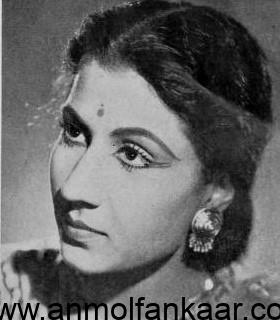
After getting school education upto 12 years of age, she entered films. Her first film was Zameen-43 as a side Heroine. Then came Minerva’s Dr. Kumar-44 and Naghma E Sehra-45 – in which she was the Heroine of Master Vithal. Due to her good acting skill, there was no shortage of film offers. She had to add Jr. to her name , as there was a more famous actress, singer Khurshid Bano, already in the film line, in the same period.
Khurshid’s younger sisters Baby Meena (later Meena Kumari) and Baby Madhuri Later actress Madhu-( Mehmood’s wife) were also working in films. Khurshid Jr. married her handsome co-star Altaf. who did few films as a Hero but then shifted to side roles soon. After Partition, the couple considered shifting to Pakistan, but decided to stay here as her both sisters were here and doing better.
As long as Meena Kumari was alive, they were comfortable, but after her demise, they became helpless and went down financially. They had to live in smaller tenements and roles also dwindled. Khurshid Jr. acted in 65 films. Her last film was Oh Bewafa-80. Altaf acted in just 21 films from Sipahi-41 to Pakiza-71. Even Khurshid had also acted in it.
Note: There are cases of actresses having their real names as Khurshid who appeared in Hindi films with other stage names and thus their cases do not fall under the cases of same name confusion. One was Begum Khurshid Mirza who appeared in many films as Renuka Devi before migrating to Pakistan where later She did use her real name for her roles receiving lots of popularity. The other is famous actress of the 1950s who went with stage name of Shyama from the beginning.
5. KALYANI BAI AND KALYANI DAS….
Hailing from Turkman Gate in Delhi, Kalyani Bai was born in 1916. Her real name was Zarina. She was passionate about singing from a very young age and subsequently started her formal training with Ustad Wazire Khan and in no time started singing for All India Radioand HMV. That era saw an influx of records made from the many Ghazals, Khyaal & Thumristhat she had sung.
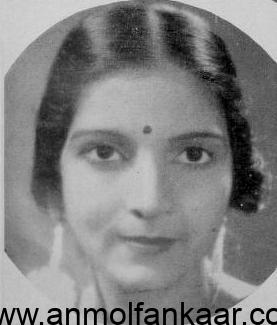
When a contact was made to her at her house situated in ‘Tekriwala bunglow’ on Dargah lane in Mahim(West), a few years back, Kalyani Bai said that with the advent of Talkie films the demand for well enunciated and melodious singers suddenly went up as till then playback hadn’t been the trend and actors would themselves have to sing the songs live in front of the camera. In the midst of this, one day, two brothers from Punjab saw her in a recording and came over to her house. They wanted to make a film with Kalyani. They agreed to all the conditions that Kalyani’s Abba put forth and hence Abba-Ammi along with their 15 children went on to Kolkata. This was during the Mid 30’s. Kalyani Bai was approximately 13 years old at that time. This film ‘Pardesi’, according to Kalyani, was completed halfway when a spat took place between the two brothers and the film had to be shut down.
As soon as B.N.Sircar, the owner of ‘New Theatres’ and R.C.Boral, the music director came to know of this, they called Kalyani and immediately employed her in their company at a salary of Rupees 250 a month. Since her nickname was ‘Kallo’, R.C.Boral gave Zarina a new name and henceforth she came to be known as ‘Kalyani Bai’.
Kalyani was featured in all the four films released by New Theatres in 1937 viz ‘Anath Ashram’, ‘Mukti’, ‘President’ and ‘Vidyapati’, here she not only acted alongside heavyweights like Prithviraj Kapoor, Trilok Kapoor, Uma Shashi, Jagdish Sethi, P.C.Barua, Kanan devi, Pankaj Mullick, K.L.Sehgal, Leela Desai, Pahadi Sanyal, K.C.Dey, and K.N.Singh, she also sang some songs for her characters in those films. Playback was in its initial phase and had just been introduced in 1935 by ‘New Theatres’ in their film ‘Dhoop Chhaon’. And in practice, it wasn’t the singer’s name (who had actually sung the song) that appeared on the music records but the name of the character of the movie on whom the song was filmed and since this practice continued for another one and a half decade, it is virtually impossible to verify the songs sung by almost all the artists of that era including Kalyani.
Mumbai based Sardar Chandulal Shah, owner of ‘Ranjit Movietone’, was so impressed by Kalyani’s singing and acting skills that as soon as her contract with new theaters was over, he called Kalyani to Mumbai and employed her at Rupees 800 per month. The 1937 release ‘Toofani Toli’ was Kalyani’s first movie to be screened under the banner of Ranjit Movietone. The film was directed by Jayant Desai and Gyan Dutt was its Music composer. Kalyani sung three songs for this movie.
In 1938 Ranjit Movietone made a total of 8 films under its banner of which Kalyani sang and acted in 4 viz. ‘Billi’, ‘Gorakh Aya’, ‘Prithvi Putra’ and ‘Secretary’. Gyan Dutt was the composer and Pyarelal Santoshi was the lyricist for all of these films. . In the year 1939 of the 4 films that were screened under this banner, in ‘Nadi Kinare’ Kalyani acted as well as sang a duet
After parting ways from ‘Ranjit Movietone’, Kalyani appeared in movies like ‘Super Pictures’ ‘Kanyadan’(1940),‘Mohan Picture’s’‘Jadui Kangan’ (1940),‘Muslim ka laal’(1941) and‘Jadui Angoothi’(1948),‘Tarun Picture’s’ ‘Prabhat’(1941),‘Sunrise Picture’s’ ‘Ghar ki laaj’(1941),‘Ghar Sansar’(1942),‘Malan’(1942) and ‘Maa Baap’ (1944) and‘Radhika Picture’s’‘Pyara Watan’ (1942) where she not only played a range of roles from that of a heroine to a vamp, but she also sang many songs for these films. one that predominates all is the first film-qawaali of the history of Indian Cinema ‘aahein na bharin shikve na kiye’ (‘Zeenat’–1945 / Lyrics: Nakhshab / Music : Hafeez Khan) sung with Noorjehan and JohrabaiAmbalewaliin which Shyama, Shashikala and Shalini were seen on the big screen for the first time ever.
After her marriage in the year 1948, Kalyani left aside the ostentatious world of glamour and completely immersed herself in her domesticated life. After a number of decades she was once again seen in movies like ‘Aaja Sanam’ (1975), ‘Prem Kahani’ (1975), ‘Aakhiri Sajda’ (1977) and ‘Salaam-E-Mohabbat’ (1983) where she played a number of small character roles but her comeback films couldn’t bring back the magic that once was and she bid her final farewell to the big screen and spent the rest of her days quietly with her son, daughter-in-law and grandchildren. Her husband had passed away very early on and her son, working as a spot boy in films, barely managed to keep the household running. Although she had some relief in the form of a pension of Rupees 750 per month through the ‘Gandhi Welfare Trust’ set up by Richard Attenborough, Kalyani could never rise above the financial difficulties of livelihood till the very end.
In spite of all the pains and troubles that she faced, she never uttered a single word of complaint. And it was this decorous and dignified nature of hers that even superstars like Dev Anand and Sunil Dutt always showered her with the utmost respect. And then on 1st October 2009 at the age of 87, this remarkable artist of her era took her final journey. ( KALYANI BAI, from the 30s and the 40s, was traced to a small Tenement in Tekriwal Bungalow,in the lane near Mahim Dargah, in Mumbai by the famous Film Historian,writer and journalist Shri Shishir Krishna Sharma. He interviewed her on 21-2-2004. The edited Biography of Kalyani Bai is based on his writings in www.beetehuedin.blogspot.in. I thank Sharmaji for this.)
Kalyani Das was a playback singer who started her career in Hindi films from Calcutta with PC Barua’s ‘Jawaab’ (1942) and ended her playback singing career in Hindi films with ‘Iran Ki Ek Raat’ (1949). She also sang for a few films made in Bombay. To the best of my knowledge, she did not act in any films.
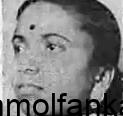
It is not so difficult to segregate ‘Kalyanis’ as both of them worked in Calcutta at different times. Kalyani Bai worked in films produced in Calcutta up to 1937 whereas Kalyani Das commenced her playback singing career from Calcutta from 1942 onward. She mostly worked for music director Kamal Dasgupta (8 out of 11 Hindi films in which she was playback singer). She sang 37 songs in 11 films….Jawab-42, meghdoot-45, Kurukshetra-45, Zameen Aasmaan-46, Prem ki Duniya-46, Bindiya-46, Manmaani-47, Giribala-47, Faisla-47, Swayamsidha-49 and Iran ki ek raat-49.
Friends, we will stop here today. I will come back with Part VII in a few days.
One reply on “SAME NAME CONFUSIONS….PART VI”
Great!